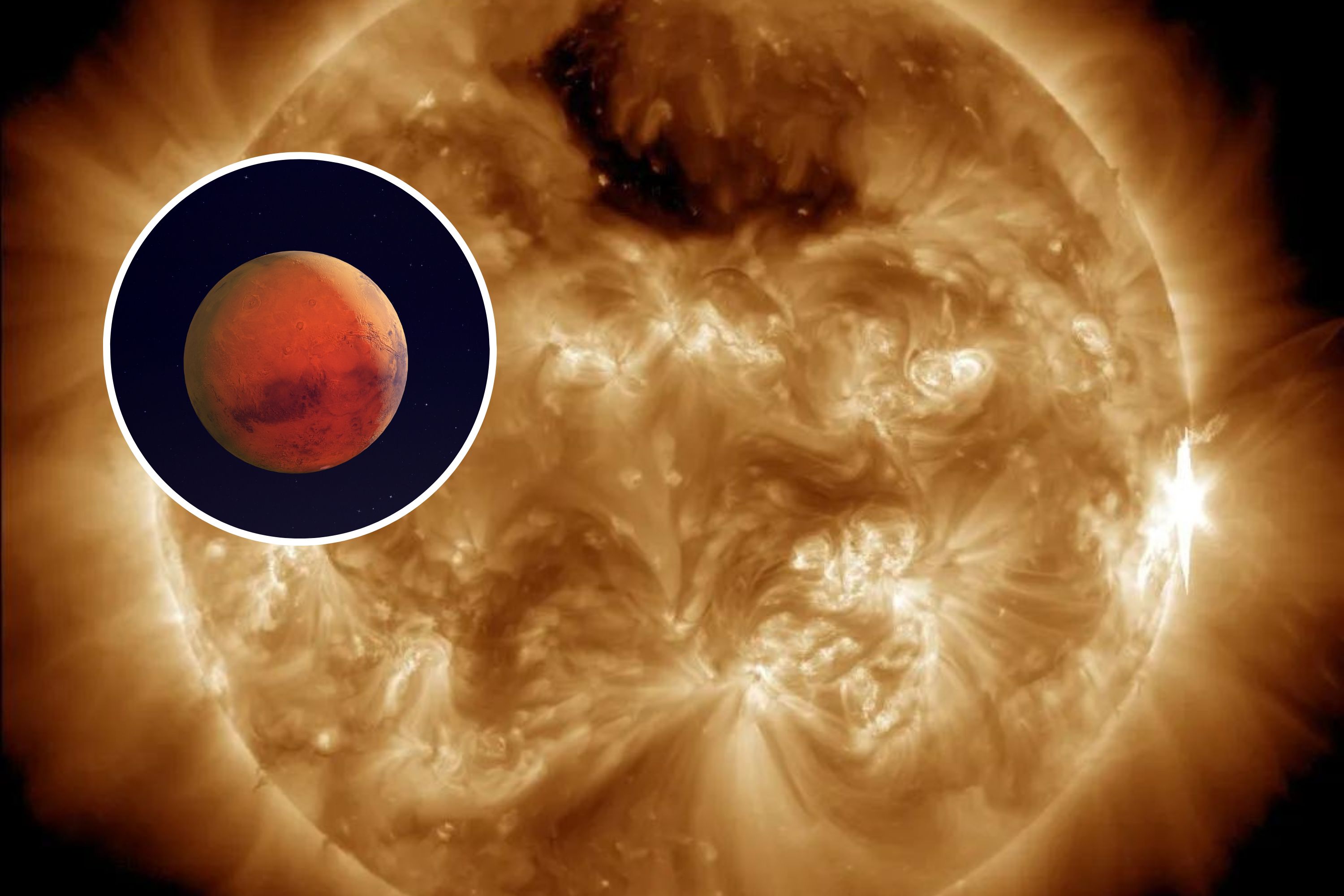A solar explosion on the sun’s surface is set to create auroras on Mars unlike those seen on Earth.
The sunspot AR3738 released a powerful X1.9-class solar flare on July 16, projecting solar plasma into space from this NASA blog post.
While this coronal mass ejection (CME) won’t reach Earth to induce northern lights, it is expected to collide with Mars, potentially sparking auroras there.

During CME impacts on Earth, our magnetic field acts as a shield, causing geomagnetic storms and auroras at the poles.
Solar particles excite gases in our atmosphere, producing colorful lights—green and red from oxygen, and blue and purple from nitrogen.
Unlike Earth, Mars lacks a strong magnetic shield, leading to auroras not limited to its poles but visible across the planet due to its unique magnetic field configuration.
“Mars lacks Earth’s protective shield against energetic solar particles, leading to planet-wide auroras during periods of high solar activity. This could pose hazards for future astronauts,” explained Schneider.

Images captured by NASA’s MAVEN spacecraft reveal Martian auroras as a purple glow in false-color ultraviolet light, likely appearing green to onlookers on the planet.
According to Schneider, based on MAVEN’s UV studies, Mars auroras are expected to appear green due to the presence of atomic oxygen resembling green Earth auroras. Future Mars missions aim to deploy better cameras for clearer images of the phenomenon.
